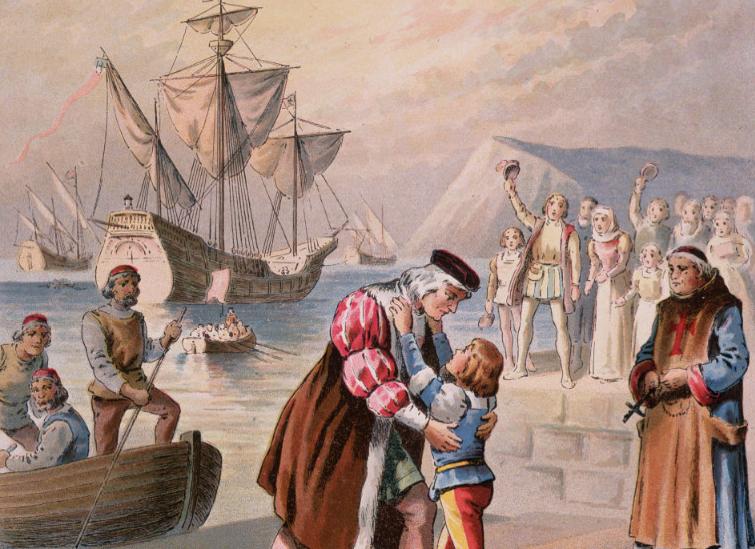
Figure 1.--Here Christopher Columbus bids farewell to his son Diego at Palos, Spain, before embarking on his first voyage (August 3, 1492). We are not sure who the illustrator was. |

|
Spain and its Catholic monarchs (Isabel of Castille and Ferdinand of Aragon) in the late-15th century were focused on the Reconquista and Mediterranean politics. They had not like the Portuguese heavily invested in Atlantic voyages and acquiring geographic and navigational data. Castille was not a naval power and Aragon has a Mediterranean focus. Several unrelated developments, however, combined to launch Spain on the path of global empire and fabulous wealth and the benefis flowed to Spain's largely underdevoped Atlantic ports. Portugal dominates the Atlanic coast of tge Iberian Peninsula. Most Iberian Atlantic ports are Portuguese. The rise of the Ottoman Empire began to close off Europeans to easterly trading routes. This adversely affected Aagon and its Mediterranean orientation. The increasing dominance of Venice within Italy, mean that Genoans who had acquited geographic and navigatiojal knowledge had to look west for employment. And the most obvious place for such employment was the Iberian Peninsula which jutted out into the Atlanic Ocean. Both Portugal and Spain had Atlantic ports from which expeditions could be launched. The Poirtuguese had already invested heavily in maritime expeditions and did not need Italian navigators. Spain on the otherhand had not. Thus the Italian skills and knowledge were of much greater importance. Portugal and Spain competed for dominance. The War of the Castilian Succession (1475-79) developed into a war between Castile and Portugal over Atlantic trade, meaning at the time the African coast. Castilian naval forces at the time were limited. Palos was especially important and most Catillian navigational experts were found there. The Castilian forces were defeated. Ferdinand and Isabell, in the Treaty of Alcáçovas (1479) ceded rights to Atlantic and African lands and seas--except the Canary Islands. They did not, however, lose all interest in the Atlantic and benefits Portugal was acquiring from the Atlantic trade. They thus turned a blind eye to the Palos navigators who were violating the Treaty and competing with the Portuguese along the African coast. Once the Reconquista ended with the fall of Grenada, (January 1492), Queen Isabela decided on a new Atlantic adventure, essentially launching the rise of Spanish seapower and a vast colonial empire. Columbus set sail on board the Pinta, Niña, and Santa María from Palos (August 1492). With Columbus were the Pinzón Brothers, who were natives of Palos. Palos is also the site of the Rábida Monastery where Columbus consulted with the Franciscans about his plans for organizing an expedition of discovery. The Franciscans and Rábida would play an imprtant role in the Comquest of the Americas. Palos would play a pivotal role in the settlement and Christianization of the New World in succeeding centuries. La Rábida would play a central in the Christian evangelization of the Americas. Palos' dominance was short lived. The Spanish monarchy's establishment of the Casa de Contratación at Seville (1503). Seville would rise as Spain's major port.
Navigate the Children in History Website:
[Return to the Main Spanish Voyages of Discovery page]
[Return to the Main Voyages of Discovery page]
[Return to the Main 15th century page]
[Return to the Main 16th century page]
[About Us]
[Introduction]
[Biographies]
[Chronology]
[Clothing]
[Disease and Health]
[Economics]
[Environmental issues]
[Geography]
[History]
[Human Nature]
[Law]
[Nationalism]
[Presidents]
[Religion]
[Royalty]
[Science]
[Social Class]
[Bibliographies]
[Contributions]
[FAQs]
[Glossaries]
[Images]
[Links]
[Registration]
[Tools]
[Children in History Home]
